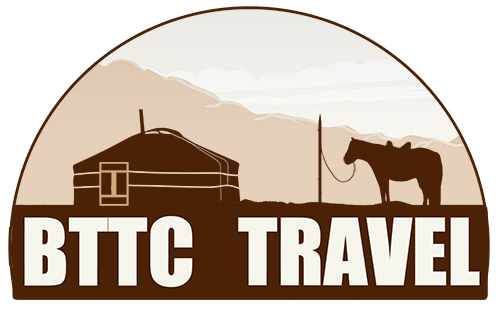Before you visit MONGOLIA
Accessibility
Weather/ Best time to travel
Visa information
Vaccination
Mongolian embassies abroad
While you are in MONGOLIA
Mongolia’s grandest national festival, is celebrated every year from July 11-13, bringing the country to life with its vibrant traditions and culture. This exciting event honors the spirit of the Mongolian people through impressive displays of athleticism, skill, and heritage. At the heart of Naadam are the “Three Manly Games”—wrestling, horse racing, and archery—each one deeply rooted in history and national pride.
Wrestling – Wrestling is the most beloved sport in Mongolia, so much so that when a son is born, it is a common wish from parents and grandparents for him to become a wrestler. This highlights the deep cultural significance of the sport, and every Mongolian eagerly watches the Naadam wrestling competitions.
At the start of the event, wrestlers enter the arena in a line, led by the highest titleholder. They wear traditional, decorated Mongolian boots, hats, and distinctive wrestling attire, including the zodog (a silk, open-fronted vest with long sleeves) and shuudag (tight-fitting trunks). Wrestlers earn prestigious titles such as Titan, Lion, Garuda, Elephant, and Falcon, each symbolizing strength and honor, with titles awarded during the Naadam festival.
To achieve a title, a wrestler must demonstrate exceptional skill and stamina. A victory in five consecutive matches earns the title of Falcon, while seven straight wins confer the title of Elephant. A wrestler who wins every match in the competition is crowned Lion, and a repeat champion the following year achieves the highest honor: Titan.
The competition is a thrilling showcase of wrestling techniques, with a variety of throws—some say there are hundreds—requiring not just strength but strategy and precision. In indoor competitions, wrestlers step onto a carpet and remove their hats as a gesture of respect. A wrestler is considered defeated if any part of his body, other than his feet or arms, touches the ground.
Unlike international freestyle wrestling, weight categories are not a factor in Mongolian wrestling, making each match a true test of strength, skill, and technique.
Horse racing – Mongolians have a deep connection with horses, having been born on their backs for centuries. Horse racing is not just a sport; it’s a cultural legacy that runs through the veins of the Mongolian people. Over the years, a unique and thrilling system of races has evolved, with events taking place during major national festivals like Naadam.
Races are divided into six age groups, with distances ranging from 15 to 30 kilometers. These races are held on the vast, open steppe, with no special tracks—horses race across natural terrain, jumping over obstacles as they charge forward. Before each race, riders sing the ancient war song Giingoo, a powerful ritual that sets the stage for the competition.
Mongolian horse racing is a thrilling competition that showcases the incredible stamina and speed of the nation’s prized steeds. Races are divided into distinct age groups, and the race distances can vary depending on the weather conditions of the day, ensuring the welfare of the horses is prioritized.
The different age groups and their race distances:
Riders start at the finish line and race back to it, effectively doubling the distance. Competitions can be held on both saddled and unsaddled horses, with participants being horses at least two years old. The winner is celebrated with a traditional cup of airag (fermented mare’s milk), which is sipped and then sprinkled on the horse’s head and croup as a sign of respect and honor.
After the race, a praise-singer honors the riders and their horses, extolling their skill and endurance. This centuries-old tradition remains a vibrant part of Mongolian culture, bringing together the love of horses, the spirit of competition, and the pride of a nation.
Archery – Archery is a sport deeply rooted in history and precision. The ancient Mongolian target immortalizes the incredible record of Yesuhei-Baatar, whose arrow famously hit a target from an astounding 536 meters away. The bow itself dates to the Mesolithic period, and the Mongols have long been renowned for refining the design of the bow as a powerful combat weapon.
Today, Mongolian archery, though less complex than its ancient form, still requires immense skill. The target, a “wall” made of cork cylinders braided with leather straps, is four meters long and 50 cm high. The competition takes place at 75 meters for men and 60 meters for women. Archers shoot with bows that require between 22-38 kg of force to draw. Historically, three types of bows were used: the “big hand” (165-170 cm), the “average hand” (160 cm), and the “small hand” (150 cm), with the “average hand” bow being the most common today. Arrows are crafted from pine wood and fitted with feathered fins, allowing them to soar up to 900 meters.
Naadam archery attracts both individual competitors and teams of 8-12 people. Each male archer is given 40 arrows to shoot at the target. Judges, dressed in traditional national attire, stand by the targets, raising their hands after each shot and praising the best marksman in a recitative voice. The event is accompanied by vibrant national rituals, with the chanting of the “uukhai” song before the competition, calling on the archers to aim true and hit their mark.
Mongolian archery isn’t just a contest of strength, but a celebration of heritage, precision, and skill that has been passed down through generations.
